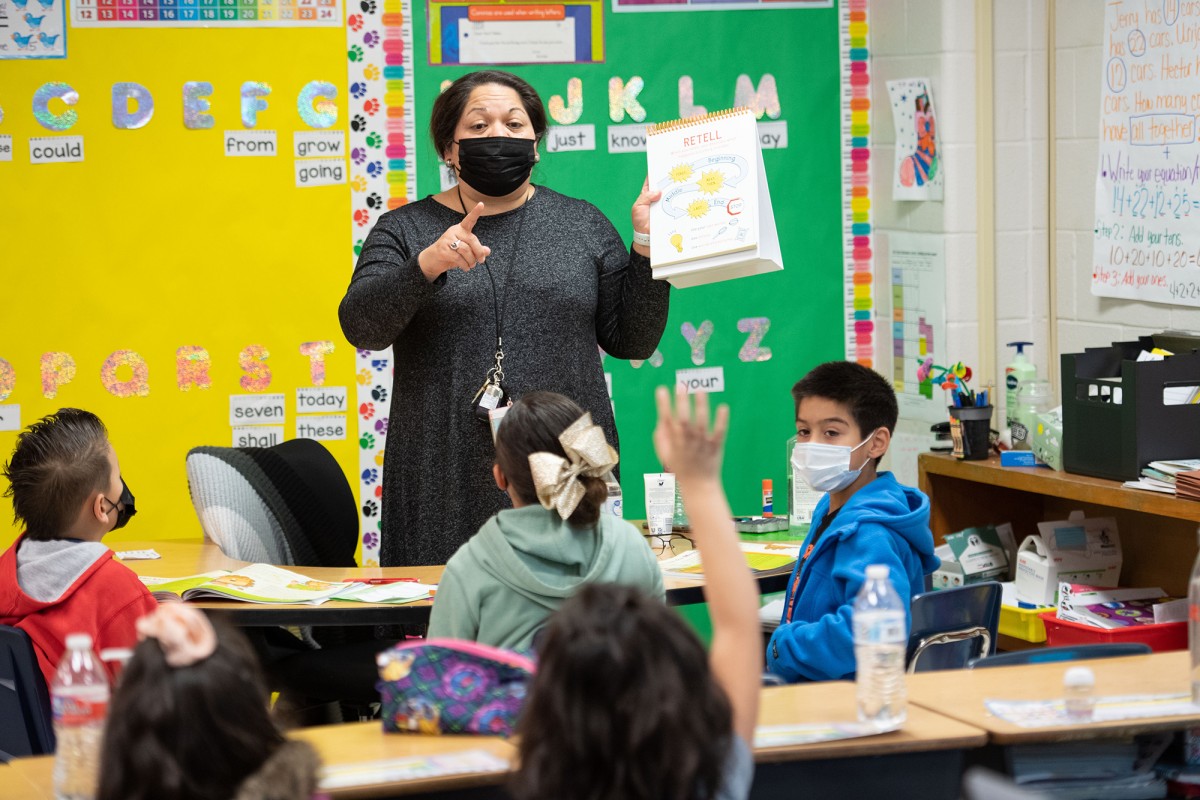Learning Acceleration Strategy #2: Prioritize the use of high-quality instructional materials and a plan for training teachers to use those materials effectively
May 12, 2022

This feature is the second in a series of pieces from NIET that will focus on specific strategies to support learning acceleration efforts. This spring, NIET published a new policy paper about effective ways that districts are strengthening their practices to combat learning loss and accelerate student learning. Specifically, we talked with Somerset ISD in Texas, East Feliciana Public Schools in Louisiana, and Cross County School District in Arkansas. The paper highlights the work educators are doing in these districts across the country.
To accelerate learning, schools must consider how to utilize high-quality instructional materials, as they are a key foundation for teachers as they engage students in grade-level work. A high-quality curriculum provides resources to help teachers address learning gaps, and district and school leaders play an important role in creating opportunities for teachers to learn how to maximize their high-quality curriculum and instructional materials to meet individual student learning needs.
Numerous studies, including NIET’s 2020 report High-Quality Curriculum Implementation: Connecting What to Teach with How to Teach It, illustrate the importance of high-quality instructional materials for student success. Using a high-quality curriculum frees teachers to spend their time differentiating and scaffolding learning rather than gathering and creating instructional materials on their own; however, teachers need support to make the shift to new instructional materials, and that support needs to continue beyond the first year of implementation.
Utilizing weekly professional learning to deepen understanding of curriculum design and support of grade-level standards
Having in place collaborative learning structures, with training for teacher and school leaders to guide these weekly sessions, provides the space for gaining a deeper understanding of how instructional materials can be used to support individual students. Cross County High School adopted a new literacy curriculum in the summer of 2021 to better support students in reaching the depth of knowledge required by grade-level standards. "We were afraid that the teachers wouldn’t fully use the new curriculum, given all the demands on their time," said District Executive Master Teacher Mindy Searcy. "But we worked with them to deeply understand the units, how the assessments were aligned to state standards, and the resources to use with lower-performing students. We are seeing them use the curriculum with individual students. They understand now how to support individual students or groups of students in order to keep them engaged in grade-level work."
Searcy attends weekly professional learning meetings for teachers, in addition to her support for school leaders and their leadership team members. "We are taking more time with the curriculum," she said, "noticing where scores might be slumping and figuring out together why and what we could do to address it."
For example, when data and student work in one second grade teacher's students showed a significantly bigger gap in reading comprehension than other second grade classes, elementary school Master Teacher Dana Deason co-planned and co-taught a unit over five days with that second grade teacher. She helped with assessing students, progress monitoring, and grouping students for learning acceleration, and the scores jumped. "While the data was always there," Dana said, "the difference was what we did with it."
"Working side by side with teachers," said Searcy, "helped me see the bigger picture and the connections between learning at different grade levels"” Helping teachers to understand the progression of learning across grade levels has also strengthened their ability to support student engagement and ownership of their learning.
Increasing equitable access to grade-level learning
High-quality instructional materials are particularly important in providing equitable access for low-income and minority students who often are given less demanding assignments and miss opportunities to engage in grade-level learning.1 In East Feliciana, half of all teachers were new in the 2020-21 school year and needed a deeper level of support in how to use their curriculum to serve students who were significantly below grade level. "Our novice teachers are new to the curriculum, how to use it, what supports it offers," said Master Teacher Lauren May. "So we offer a lot of coplanning and co-teaching to our newer teachers." Differentiating support for new teachers in the use of the curriculum creates consistency in teaching across classrooms and a base for teacher collaboration and teamwork both within and across grade levels.
The ability to monitor student progress and use this information to strengthen upcoming lessons was something that experienced teachers embraced as well. "We have a lot of struggling readers," May said. "In the past, the data was too general to be useful in pinpointing where a student was struggling. During the pandemic, with ESSER funds, we were able to purchase a new diagnostic assessment tool. Now we are able to progress monitor and see kids’ movement in key areas of learning. It really changed things. We know much better now, and in greater detail, what each student needs."
Read the first feature in this series here.
Find more strategies for learning acceleration in our policy paper here.
1 TNTP. “The Opportunity Myth: What Students Can Show Us About How School Is Letting Them Down - and How to Fix It.” 2018.